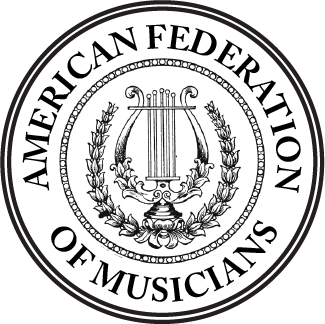Music by Ron Benvenisti
IMPORTANT NOTE:
Although much time and effort has gone in search of the interpretation of the equivalency of Hebrew letters to the Hebrew alphabet over many years. Despite many approaches I have not found a definitive and solid connection, which can be regarded as proof, (Peirush) but remains in the theoretical realm (Drasha).
Go to the Original SoundAssets site on the Wayback Machine.
This site will be updated in the near future.
For current works please go to BandLab here, and Soundcloud here
For collaborations with my wife, please go here.
Genesis Verse 1:1 Musically Encoded
Based on the Commentary of The Malbim (Rabbi Meir Leibush ben Yehiel Michel Wisseron - (1809 - 1879 CE)) on Genesis Bereishith) 1. Many sources are cited there from Gemara (Talmud). See the lively discussion regarding the wisdom imparted to Moses regarding the tablets there. [1]
The Malbim references many Commentators such as the Rambam, Ramban, and too many others to list here. I hope you enjoy this video and the music without any explanations. If you do pursue the interpretation of the Malbim with regards to Creation and Moshe Rabbenu (Moses) of Genesis Bereishith, Chapter 1, perhaps it will get you thinking along these lines as it did for me as a labor of love and study for over a decade.
If you can find the Malbim translated into English by Dr. Zvi Faier (Hillel Press published in EY, 1982) that’s a great help, but the English is not simple, it’s mostly scientifically advanced mathematics related to the frequencies of musical notes correlated with the measurements of the tablets of the law [2] and remarkably well sourced beyond even the Malbim’s era of knowledge.
The Mishna (11b: 22-24) taught that ma’aseh bereishit – the secrets of creation – can be taught only to a single student, while ma’aseh merkava – the secrets of the supernatural – can only be taught to a single student if he is a scholar who has the ability to understand on his own. How are the terms ma’aseh bereishit and ma’aseh merkava to be understood? The Rambam interprets ma’aseh bereishit as the study of science generally, and ma’aseh merkava as the study of the supernatural. Tosafot and the Bartenura suggest that these involve the study of shemot – use of the holy names of God in an attempt to understand the secrets of creation and Godly intervention in the workings of the world. The Tosafot Yom Tov argues that what is limited is not merely the study and analysis of these secrets, but their use in performing supernatural acts.
The Gemara brings teachings of the Sages that touch on these areas of study. One example is the dispute between Beit Shammai and Beit Hillel about the order of creation. Beit Shammai argues (based on the passage in Bereishit 1:1) that the shamayim – the sky, or firmament – was created before the earth, while Beit Hillel points to a later pasuk (Bereishit 2:4) that seems to indicate that it was the earth that was created before the heavens. Beit Hillel also argues from a logical perspective, that the attic of a house is built only after the foundation and building are complete (see Amos 9:6), while Beit Shammai views the heavens as God’s chair and the earth as His footrest (see Yeshayahu 66:1), and argues that the chair should precede the footrest. A compromise position is laid out by the Hakhamim, who point to another passage in Sefer Yeshayahu (48:13) as indicating that the heavens and earth were created simultaneously. One explanation of this position is that the heavens and earth can be compared to a clay pot and its cover that are placed in the furnace so that they will harden. It is only if they are placed in the furnace together that the potter can be certain that the cover will be a perfect fit to the finished pot.
The musical Octave can be divided (c : c' = 1/2) into any number (= n) of equal intervals where the n-th root is 1/2, which in mathematics is an "irrational number" like the mathematics of music.
Consider, our musical scale was derived by Moses in 1441 B. C. E. Using mathematical interpolation from the middle of the Octave, Each half-octave then becomes three tones or six semitones, an upper and lower tetrachord, which form the precise frequency ratios of our diatonic scale.
This was calculable 3 1/2 thousand years ago, for (7/10)2 = 49/100 and 50/100 = 1/2, so that the middle of the Octave is close to 7/10, and each half is easily divided into 3/10 and 3/15. This explains the musical relevance of the matrixes derived from the measurements of the Tablets of the Law according to their true waveform frequencies.
The current musical scale system is credited to Pythagoras, a Greek philosopher and mathematician who lived around 550 B.C.E. Legend has it that Pythagoras listened to the blacksmith’s hammer striking the anvil and discovered the tones produced by the hammering was related to the weight of hammer, and to his great surprise, the weights came in simple whole number ratios to each other. Unfortunately this is a mathematical fallacy massaged by Pythagoras to “sound pleasing to the ear”. When played together, he arrived at the conclusion that the sounds fit in simple ratios to each other as notes. According to modern physics, his formula turns out to be incorrect and is not so simple. While it sounds nice, it does not take into consideration the entire 12 tones of the scale, including the black notes (on the piano), but only the simple 8 notes of the octave (white notes).
However, according to the Torah, the true scientific measurements fall into precise fractions of tenths and fifteenths In music which are the exact measurements for a complete scale, not Pythagoras’ calculation base on a division of fifths. The Tablets of the Bible form a horizontal division into fifteenths and a vertical division of tenths and fifteenths which results in a more accurate formula for the upper tetrachord, as explained above and the lower tetrachord which apply the division of each of the Tablets of the Law into the 60 Manah weight-stones by 6 vertical and 10 horizontal lines as described in the Torah. It is important to note that there are 5 basic chordal variations (modes) of each scale which yields a total of 60 chords when multiplied by the twelve tones that make up the scale (5x12): The 5 are: Major, minor, minor, major, major, minor and diminished. In figured notation that is written as I, ii, iii, IV, V, VI and VII. In modal naming that is Ionian, Dorian, Phrygian, Lydian, Mixolydian, Aeolian and Locrian. These exacting calculations of the true musical scale were derived over 400 years prior to Pythagoras’ approximation of what he presumed to be the mathematics of the musical notes.
This composition was created by mapping the complete Aleph-Beit of 27 letters to the musical scale and composing an orchestral harmony based on the interrelationship of the actual melody using the universal rules of orchestral composition.
This is the first time that the Aleph-Beit has been mapped to all 27 letters rather than the traditional Kabbalistic method of using only the 22 letters. The belief was that the 22 letters made up 21 notes of three octaves, with the 22nd letter (Tav) reserved as the final eighth note where the number 8 is associated with infinity and the Messiah and the World to Come. The 5 ending letters, known as the “Sofit”, or ending letters also are associated with that era and are also omitted. I have taken the liberty to use all 27 letters to obtain a complete 12 tone scale, (as derived by the dimensions of the Tablets) which is the foundation of contemporary music.
The resulting melody in this piece is composed of the actual sequential letters of Genesis 1:1 according to the Mosaic formula of 1441 B.C.E. The illustrations below show the correlation between the letters and their corresponding notes in the composition and the measurements of the Tablets to obtain them. The Hebrew verse is shown left to right (backwards) to correspond to musical notation which is written left to right.
ron@soundassets.com
(917) 709-1228
Local 299 (NJ)
Local 802 (NYC)
AFM Local 802 Winner: CUNY Master of Music Full Scholarship Award




